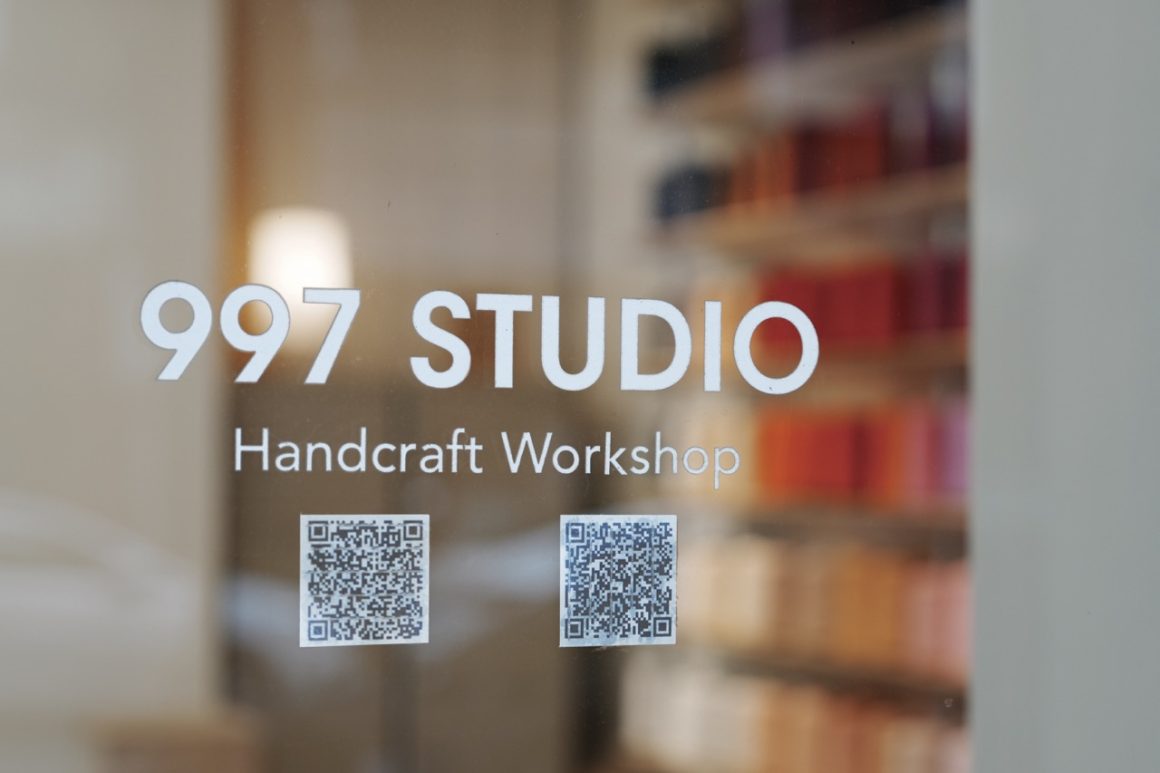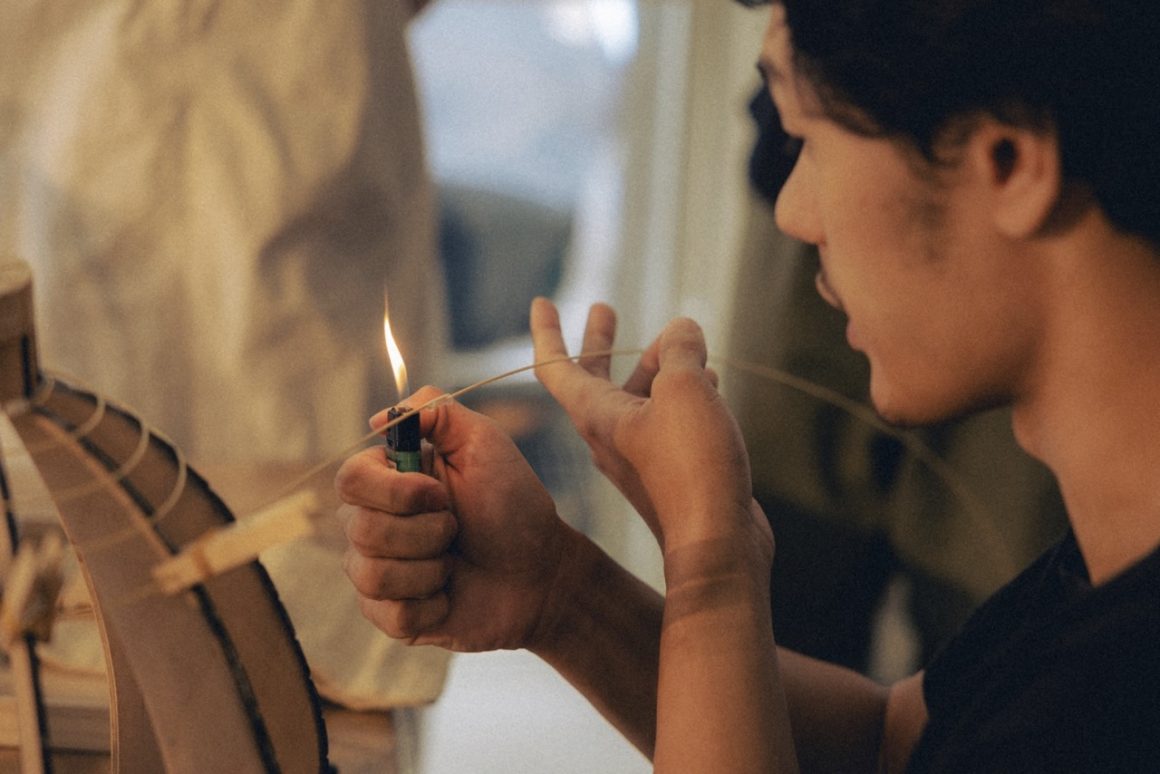Author Hollie Younger
Photographer Ray Chang
Celebrate the upcoming Lantern Festival by crafting a beautiful, traditional lantern! At 997 Studio you can create your own paper lantern using traditional Japanese techniques and locally sourced materials. The studio offers a rare chance to get creative while exploring the East Asian cultural heritage. Here, generations of tradition and craftsmanship have been condensed into an introductory class in lantern-making, allowing visitors to create collapsible lanterns that are one-of-a-kind souvenirs.

Tucked down along an alley just south of the Sun Yat-sen Memorial Hall in Xinyi District, 997 Studio offers a range of DIY experiences, from rug-making to ring-forging. Its newest offering, traditional Japanese lantern-making, is something you likely won’t find anywhere else in Taiwan.

The studio is cozy, and not just from the soft glow of a dozen hanging lanterns. The space is filled with whimsical elements, dyed yarn in all colors of the rainbow stacked along the walls, and two friendly cats who roam freely. The resident tabby often supervises the crafting process, and if you’re lucky, he’ll curl up beside you as you work.

Over the past decade or so, DIY classes have become increasingly popular in Taipei, and Hans Li, the owner of 997 Studio, decided to join the trend. He launched the studio three years ago, beginning with make-your-own rug workshops, after previously offering classes out of his living room.
The lantern-making experience does require a certain amount of craftsmanship skills and creative flair, and is not available to young children. Hans is an expert craftsman, and 997 Studio introduces his teaching style as “your creative BFF – patient, friendly, and genuinely caring.”

The class takes between five and six hours, depending on a group’s speed. This includes a lunch break, and DIYers can bring along a coffee or a bubble tea to sip as they work. Groups are maximum five participants, and although instruction is in Chinese, Hans has step-by-step instruction manuals in English to help guide foreign visitors through the process. The class is great for couples, arty friends’ gatherings, or families with older children visiting Taipei and looking to take home a unique lantern, which is collapsible into a compact, travel-friendly box.

There are three lantern shapes to choose from, ranging in difficulty from beginner-friendly to more advanced: a classic rectangular shape, a rounded oblong, and my personal favorite, the charming egg-shaped lantern.
Accompanied by a friend, I attended the lantern-making class and had a great time. After settling in at the studio’s large workshop table, we got started with the creative process.

The first step was assembling a wooden base, piecing together ridged segments that slot neatly into place – much like building flat-pack furniture. This temporary frame provides support while the bamboo skeleton of the lantern is constructed.

Getting the bamboo skeleton right takes between one and one-and-a-half hours. It’s fiddly, and the bamboo strips snap easily. When a mistake is made, however, you can weld a fresh bamboo strip to the snapped ends using a plastic casing and melding the two ends together under a lighter flame.

Hans explained that shop-bought, factory-made lanterns will have a perfectly smooth inner frame, often made from metal wire, but the mark of true craftsmanship in Japan is a ridged bump within the inner structure, signifying its handmade status. Don’t be afraid of imperfections!

Once we had the inner structure of our lantern complete, it was time to papier-mâché using semitranslucent white sheets of traditional Japanese paper (washi). This next process takes upwards of thirty minutes.
We flipped our lantern on its side and began to apply glue to its ribcage. Next, we took delicate strips of paper, sprayed with water to keep the paper pliable, and carefully laid them on our frame, one by one, from top to bottom. The next step was quite satisfying: we took a coarse brush and swept the paper, cementing it to the bamboo skeleton – this was when our lantern took shape.

Once all the sides were covered in washi, we took hairdryers to dry the glue. Finally, we removed the inner wooden base, and happily our lantern held form. Hans then helped to insert a bulb, wire, and metal stand to complete the piece. After we had admired our handiwork, we folded it into a small disk and popped it into an easy-to-carry box, perfect for travelers to take home.

These DIY-class souvenirs make for a fantastic addition to any home. Sleek and stylish, classic East Asian décor artworks, they look perfect on a nightstand, hanging from the wall, or placed on a windowsill to give your home a warm cozy glow and bring back memories of a long, joyful, rewarding day of handiwork in Taipei.
997 Studio
🚩11, Ln. 452, Sec. 4, Renai Rd., Xinyi Dist.
🔗997Studio.rezio.shop
🕝Reservation only
This article is reproduced under the permission of TAIPEI. Original content can be found on the website of Taipei Travel Net (www.travel.taipei/en).












